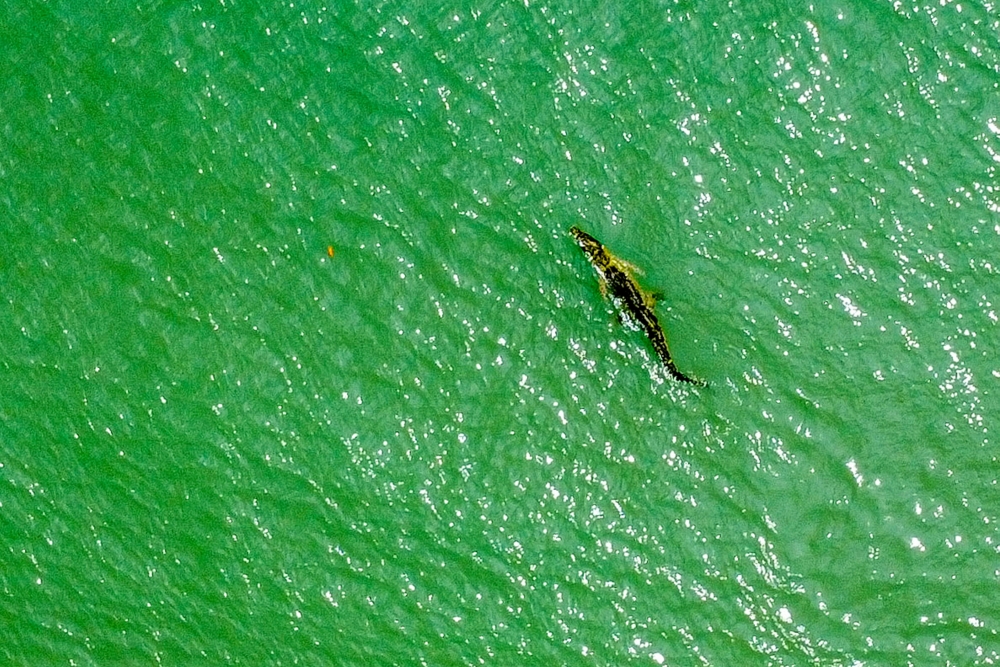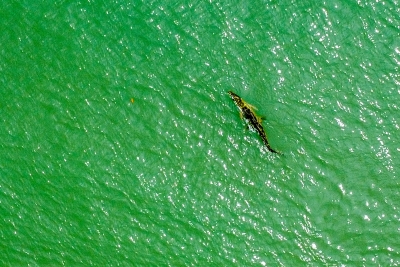FEBRUARY 7 — The saltwater crocodile (Crocodylus porosus) is a formidable apex predator, that commands the lush, river-laden landscapes of Sarawak, Malaysia.
For centuries, these ancient reptiles have shared their domain with humans, deeply embedding themselves into local lore and culture.
However, recent decades have seen an uptick in human-crocodile conflicts, attributed to the growing crocodile population in Sarawak’s rivers.
Sarawak is home to two crocodile species, which is the iconic Crocodylus porosus and the elusive Tomistoma schlegelii.
Crocodiles hold cultural and historical significance in the region. For instance, one enduring legend is that of Bujang Senang, a fearsome crocodile believed to be the reincarnation of an Iban warrior, Simalungun.
And let’s not forget the local belief in the healing powers of crocodile body parts, which are thought to possess medicinal properties.
In the late 1980s, the population of Crocodylus porosus experienced a sharp decline due to excessive hunting for their skins and meat, along with the harvesting of their eggs and hatchlings.
Thankfully, the implementation of strict legal protections led to a significant rebound in their numbers, as reported by the Sarawak Forestry Corporation (SFC).
However, this successful recovery has also resulted in new challenges, notably a rise in human-crocodile conflicts.
This growing trend underscores the urgent need for comprehensive data on crocodile populations. Such information is crucial for crafting effective management strategies that balance the delicate act of reducing human-crocodile conflicts while continuing to protect these magnificent creatures.
After all, in Sarawak, the story of the crocodile is far from over, it’s just getting started.
To gain a better understanding of the current situation, a 2012 crocodile census survey conducted across the Bako River, Batang Samarahan, and Sibu Laut River revealed notable population trends and patterns of human interaction.
By employing spotlighting techniques to detect the telltale eyeshines of crocodiles, researchers observed varying population dynamics within these waterways.
For example, in Sungai Sibu Laut, the crocodile population density had declined by nearly 40 per cent since 2003, driven by intensified fishing activities, expanding of human settlements, and habitat disruption from riverbank development.
Meanwhile, in less disturbed areas like Batang Samarahan, the presence of hatchlings and yearlings indicated a successful nesting of crocodiles.
These findings underscore the urgent need for effective management strategies to balance crocodile conservation with public safety, especially as human-crocodile conflicts rise.
As a result of these developments, human-crocodile conflicts have become increasingly common.
Between the year 2000 and 2020, 164 crocodile attacks were reported in Sarawak, averaging 7.8 cases per year, with an almost equal split between fatal and non-fatal incidents.
More recently, fatal attacks have remained a pressing concern, with six cases reported in both 2022 and 2023. The highest recorded fatalities were reported in 2021, with nine deaths.
One particularly tragic example occurred on December 23, 2024, when a 15-year-old boy was attacked by a crocodile while fishing in the Samariang area.
Not to mention on December 22, 2024, a fisherman was also fatally attacked by a crocodile in Kuala Baram and the body was found after four days.

Sarawak is home to two crocodile species, which is the iconic ‘Crocodylus porosus’ and the elusive ‘Tomistoma schlegelii’. — Bernama pic
These alarming incidents underscore the urgent need for effective management strategies to mitigate conflicts and protect human lives.
The growing urbanisation and large-scale plantation developments in Sarawak have significantly impacted crocodile habitats, reduced their food sources and increased water pollution.
Concurrently, rising human populations and intensified river activities have escalated the frequency of encounters between humans and crocodiles.
To address this issue, community input has revealed mixed perspectives on addressing these challenges.
Nearly half of the surveyed respondents (49 per cent) supported culling to manage the crocodile populations, while 27 per cent recommended continuous monitoring of crocodile behaviour and numbers.
A further 24 per cent suggested relocating aggressive crocodiles to sanctuaries or zoos. These findings highlight the community’s awareness of the growing risks posed by crocodiles and the need for effective management strategies that balance conservation efforts with public safety.
Looking ahead, ensuring a peaceful coexistence between humans and crocodiles in Sarawak requires a multi-faceted approach.
A comprehensive population data, community involvement, and balanced strategies are essential to address this issue.
Additionally, public awareness campaigns can promote safer river practices, while collaboration between conservation authorities and local communities can help craft solutions that prioritise both human safety and crocodile conservation.
To conclude, the rising human-crocodile conflicts in Sarawak call for immediate and well-coordinated action to safeguard public safety while preserving the region’s biodiversity.
The government must adopt effective strategies such as regular population monitoring, habitat conservation, and public awareness initiatives to tackle the underlying causes of these conflicts.
Simultaneously, local communities play a vital role by embracing safer practices, reporting crocodile sightings, and cooperating with authorities to address these challenges.
Through collective efforts, Sarawak can protect its residents while ensuring the conservation of these iconic predators, which are integral to the region’s ecological and cultural heritage.
* Emerald Keith Anak Menai and Assoc Prof Dr Hasmahzaiti Omar are from the Institute of Biological Sciences, Faculty of Science, Universiti Malaya.
**This is the personal opinion of the writer or publication and does not necessarily represent the views of Malay Mail.







